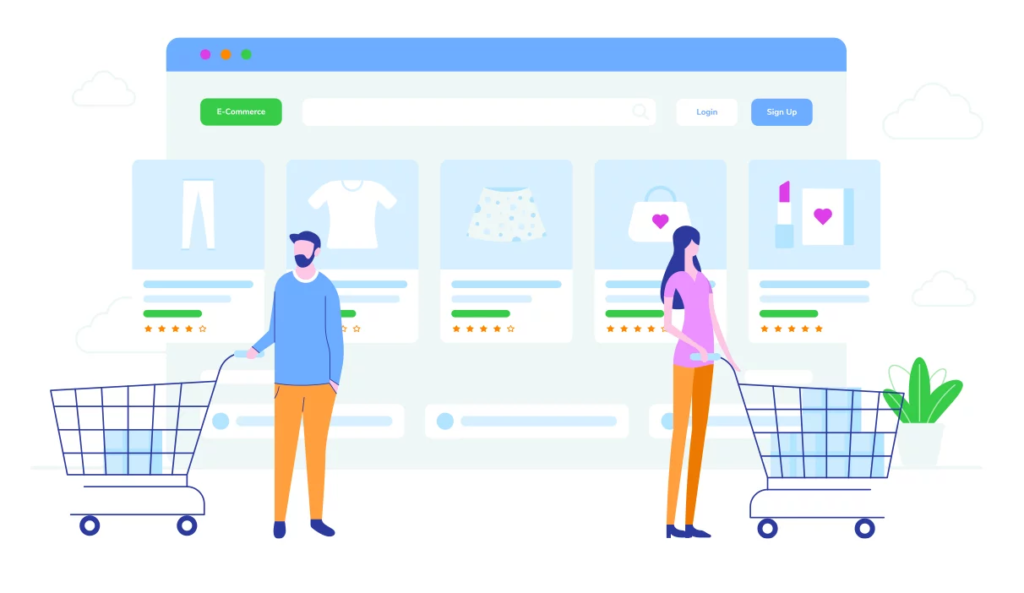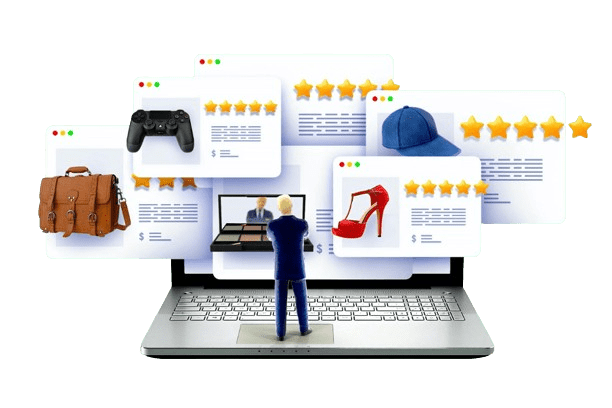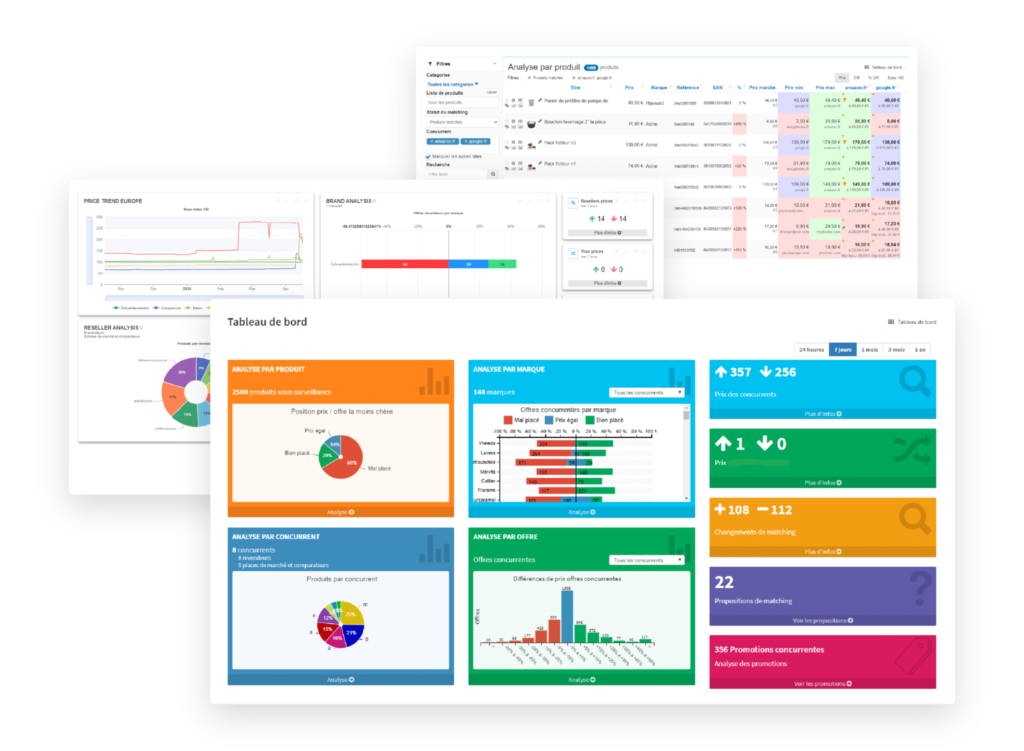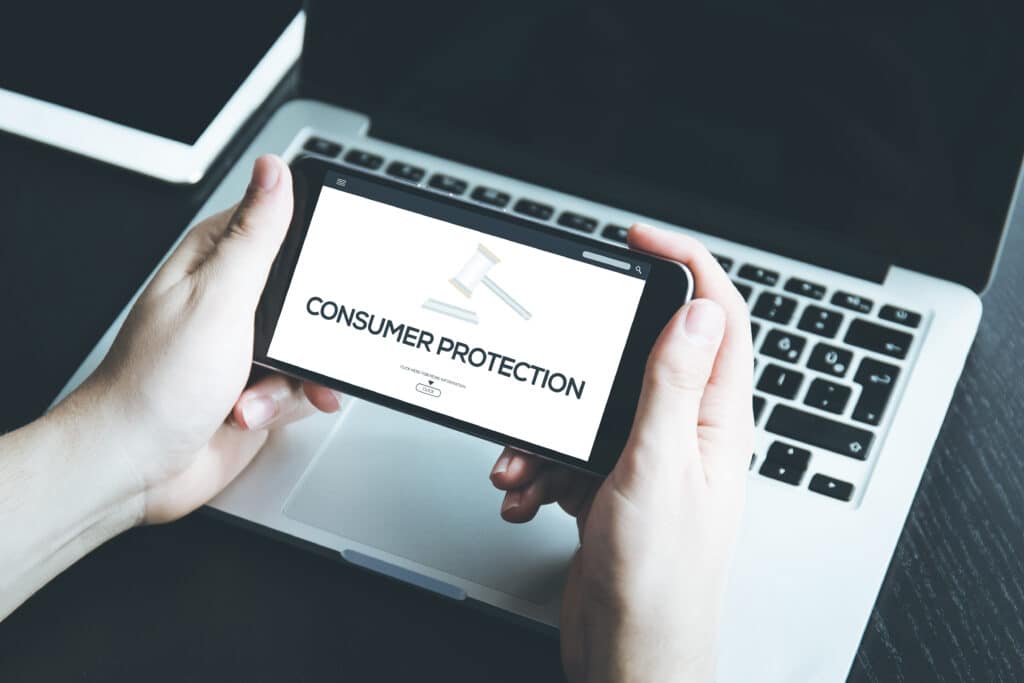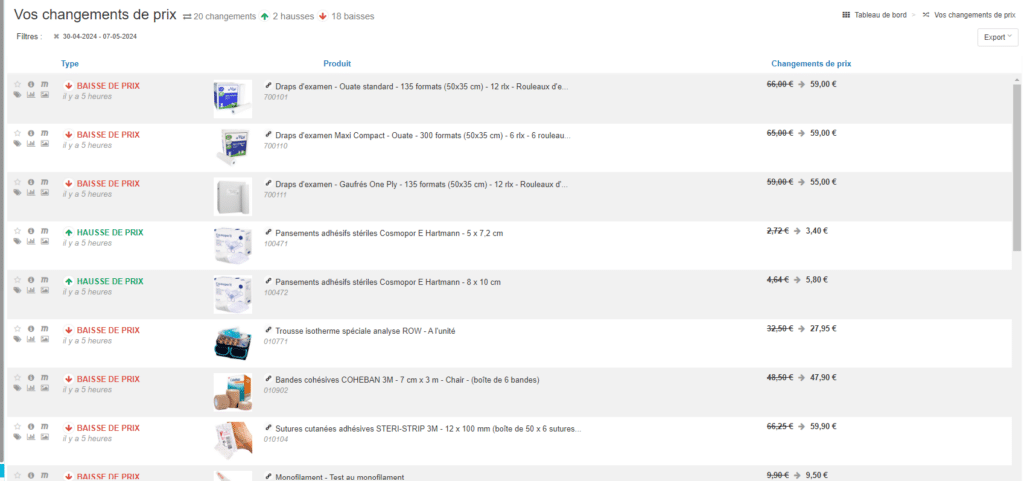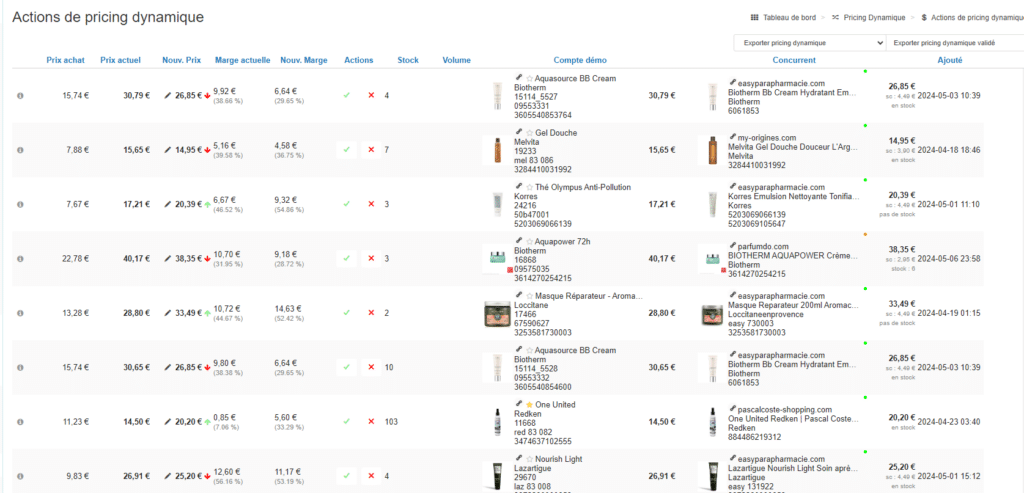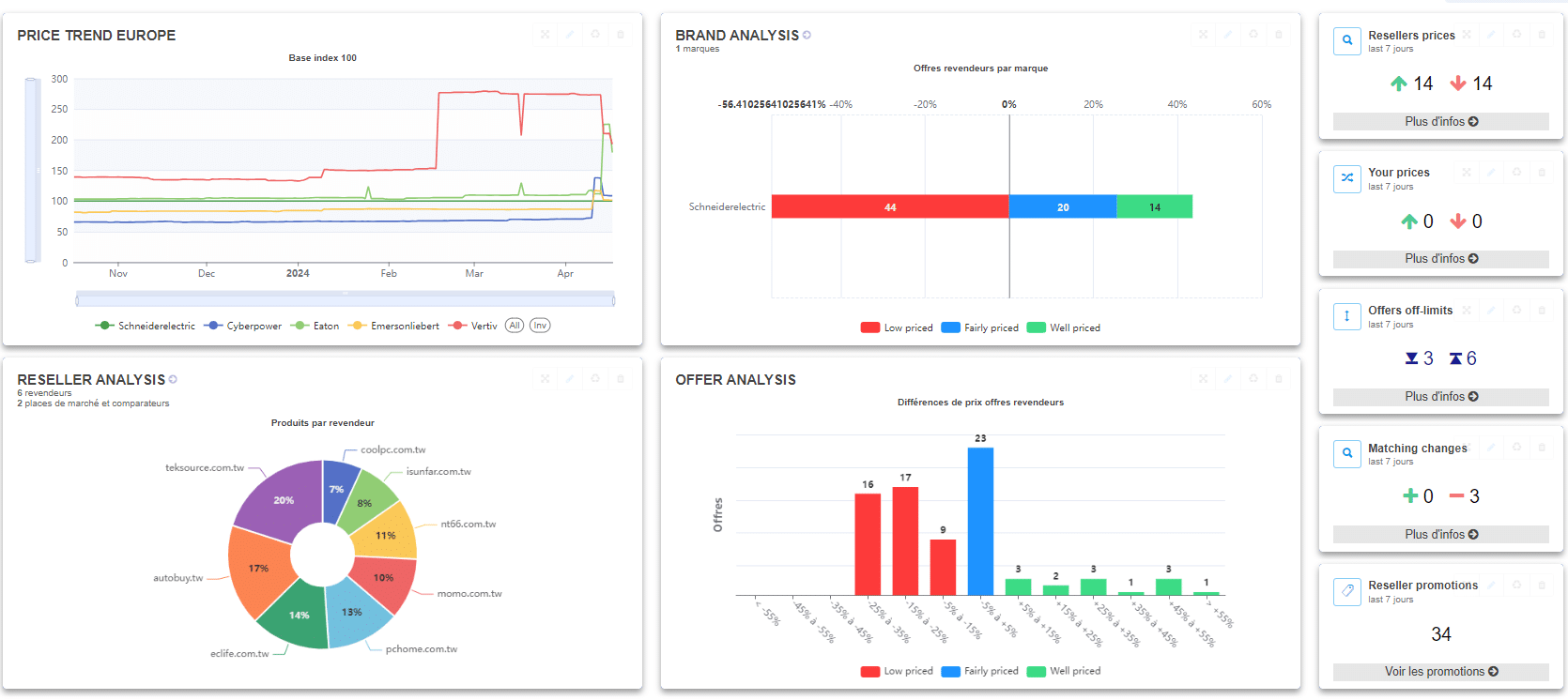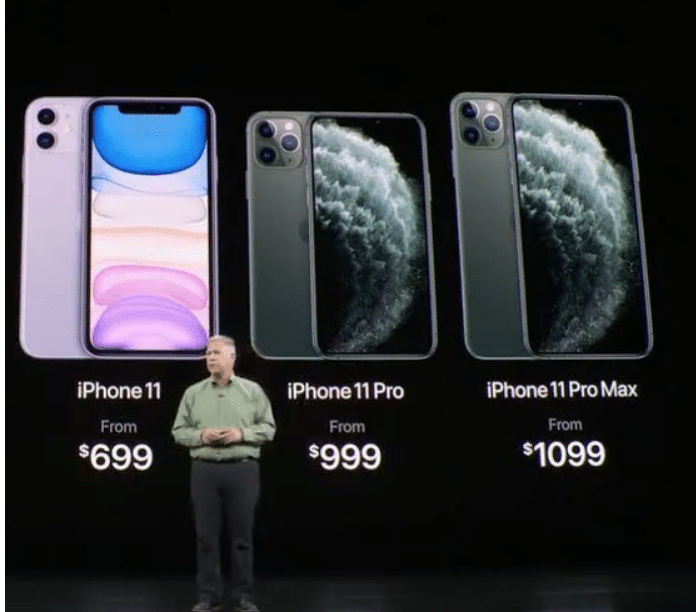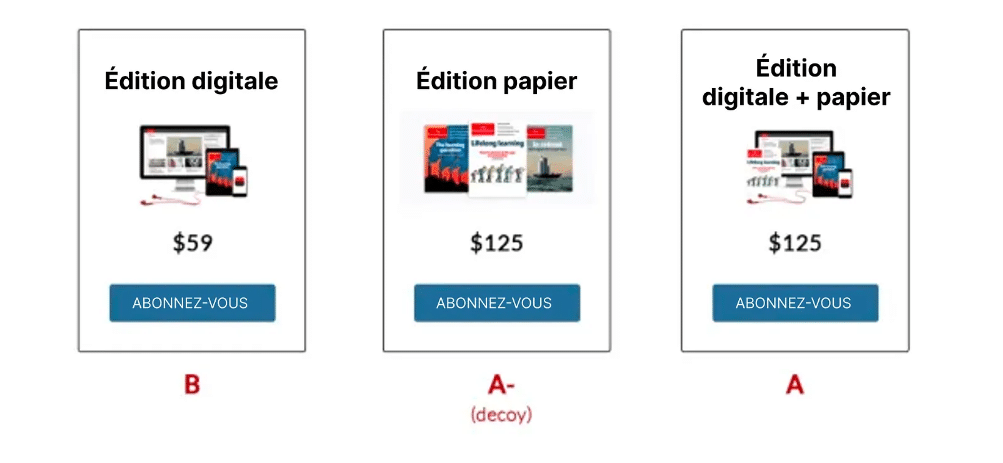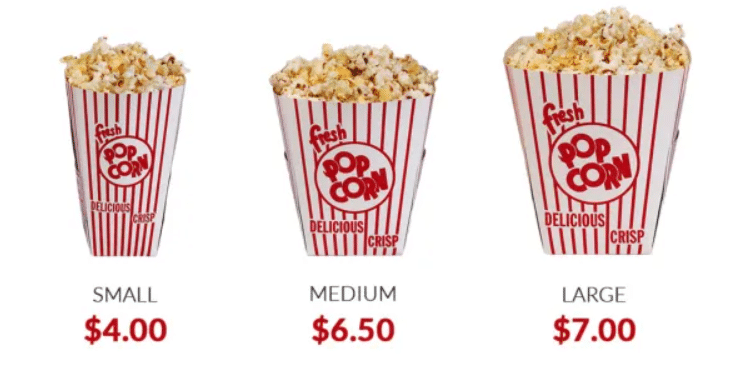Control your distribution and optimize your prices: towards an omnichannel strategy
Mastering omnichannel distribution, both online and in-store, is a strategic challenge for all brands. This is how they can preserve their brand image, create a quality shopping experience and, ultimately, increase their sales. To meet this challenge in the age of omnichannel, these brands must be able to collect reliable and usable data at all levels of contact: in stores, on reseller sites, search engines or price comparison sites. It is now an essential point in their marketing strategies in order to quickly identify areas for improvement and make the right strategic decisions.
Control your distribution at the point of sale
Brands know it well: linear readings are essential to optimize in-store performance, carefully monitor stock, traffic, merchandising, layout and pricing. In particular, they allow sales managers and brand managers to identify areas for improvement to satisfy customers and refine strategies. The integration of technologies such as mobile apps, AI and IoT (Internet of Things), combined with standardized training and collection procedures, make these audits more efficient than in the past, with 100% manual linear readings being particularly tedious. This helps build a data-driven culture that supports operational excellence and continuous improvement.
Mastering your digital distribution and digital shelf
Mastering the Digital Shelf, the online equivalent of in-store shelves, has become essential for brands looking to optimize their online visibility and attractiveness. Online intelligence plays a key role in monitoring pricing, availability, promotions, and product presentation, allowing brands to stay competitive and adjust their strategy in real-time against competitors. With specialized tools like Price Observatory, they can keep up with market trends and improve their digital positioning.
Harmonize physical and digital strategies
The control of distribution therefore requires omnichannelity. It represents a strategic approach to unify the customer experience by harmonizing physical and digital channels. This approach therefore consists of creating a synergy between the different points of contact with the consumer, whether it is a physical store, a website, a mobile application or social networks. The goal is to provide a seamless and personalized customer experience, where information and actions taken on one channel are recognized and acted upon on all others. By offering a unified view of the customer relationship, omnichannel improves customer satisfaction, strengthens loyalty and optimizes sales performance.
What solutions can be found to meet the challenge of omnichannel distribution?
The importance of in-store and online shelf surveys and thus having a 360° view is now obvious. But what solutions can be adopted to simplify this time-consuming data collection which, if done poorly, is a source of errors? To optimize this process, solutions such as Easy picky and Price Observatory are particularly effective. Easy picky Automates Shelf readings in stores thanks to scanning tools embedding an Image Recognition solution, which works simply by activating the camera of a smartphone or tablet and walking through the aisles of a store. Price Observatory ensures a Comprehensive online monitoring. It records prices, stocks, catalogues, images used, customer reviews and product ratings in real time. It monitors the greymarket, buy box holdings on marketplaces, market trends and competing products. The solution makes it possible, thanks to high-performance product matching algorithms, to monitor price changes in real time in order to better advise retailers in their online sales and pricing strategy while maintaining a good brand image. By combining these two tools, brands benefit from a reliable and up-to-date source of data in real time, allowing them to make informed decisions and strengthen their competitiveness both online and in-store.

How EasyPicky simplifies field data collection for Henkel
The sales forces of Henkel Home Care division were responsible for manually filling out large Excel spreadsheets during field surveys, which was tedious, time-consuming, error-prone and could only be done a few times a year. Negotiations with department managers were hampered by the lack of KPIs, affecting the quality and effectiveness of discussions. Sales and marketing departments had a limited vision of the field, only receiving ad hoc data during survey campaigns, which made it difficult to accurately evaluate strategies. EasyPicky has revolutionized the collection and analysis of field data for Henkel's sales force. Thanks to its Image Recognition solution, they can take exhaustive readings at each visit, simply by activating the camera of a tablet, even in 100% offline mode.
Industry leaders now benefit from instant analysis of the data collected, strengthening their negotiating power with customers with reliable and measurable information in real time. Sales and marketing departments also have immediate access to field data, automatically consolidated in Henkel's CRM, giving them a clear and constantly updated view of point-of-sale performance to quickly adjust sales and marketing strategies.
The Sucess Story Henkel & Easypicky
How Price Observatory provides Schneider Electric with clear visibility into the prices of its dealers and competitors
Schneider Electric is a multinational company with several divisions and an operational structure for each country. During the CoVID crisis, the BtoC division experienced very strong growth due to the rise of the Do It Yourself trend among consumers. Their sales to individuals, via e-tailers and specialist stores have increased sharply and Schneider Electric needed reliable information on online prices. However, the group was, at the time, totally blind on this point. With Price Observatory, they now have clear visibility into the pricing of their resellers and competitors, allowing them to make informed decisions about their own pricing. Data scrolling data guides countries in setting their prices, so that everyone knows how to adapt the price structure to the specificity of the country. Price Observatory's solution also guides countries on the Go To Market, as products are marketed through several distribution channels: B to B and B to C (including e-commerce).
The Sucess Story Schneider Electric & Price Observatory
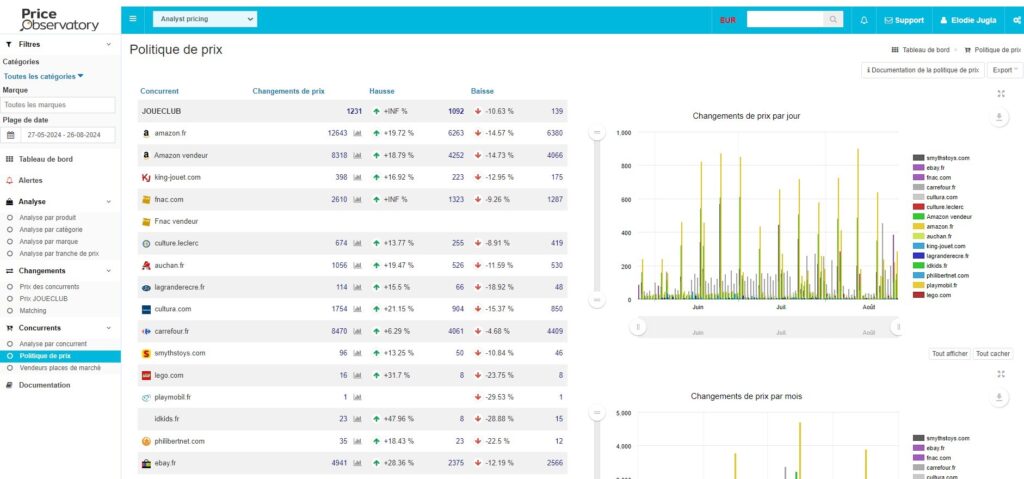
Towards a 360° vision
The rise of omnichannel distribution and the increasing complexity of consumer touchpoints require new strategies and data collection tools to ensure optimal visibility and competitiveness. Solutions such as EasyPicky and Price Observatory provide brands with concrete answers to these challenges, by facilitating field surveys and offering real-time 360° online monitoring. Thanks to these solutions, brands now have a complete and accurate view of their performance, allowing them to adjust their strategies in a reactive manner and optimize their brand image and sales.
